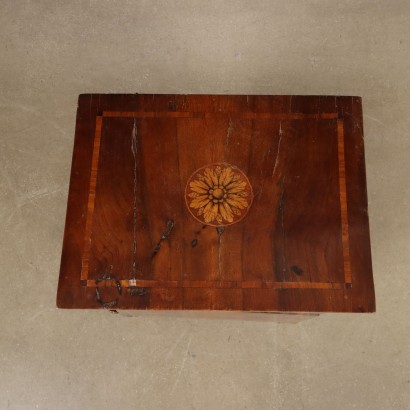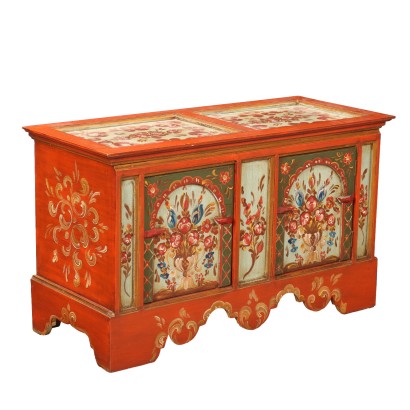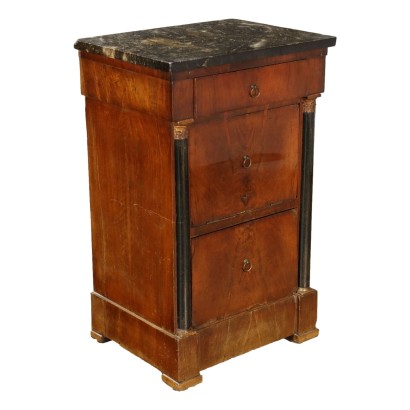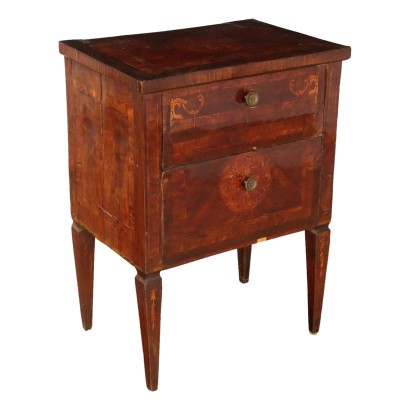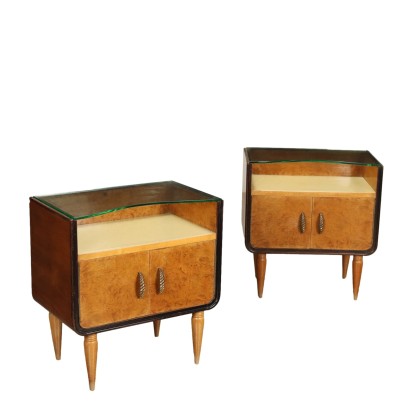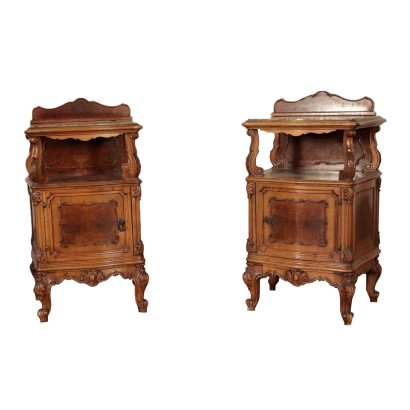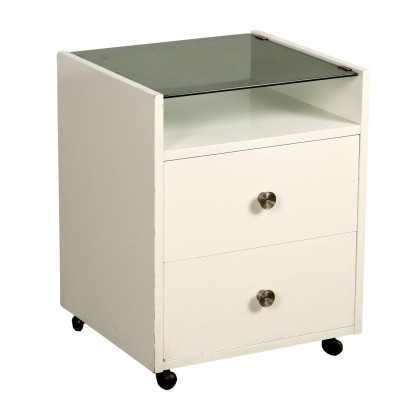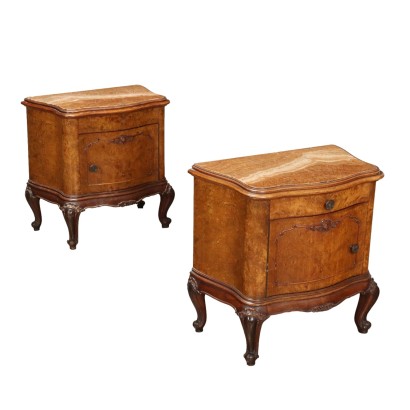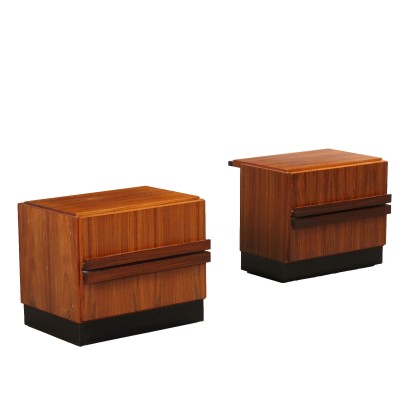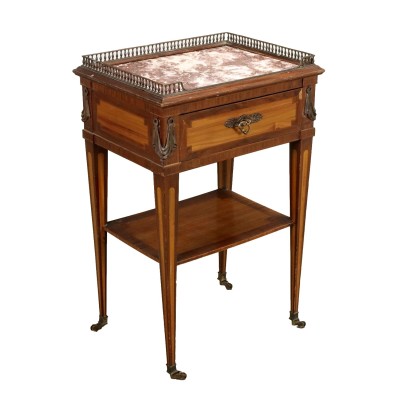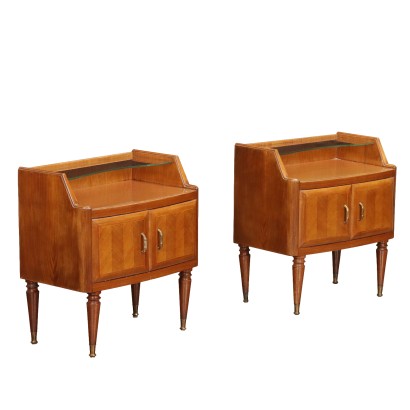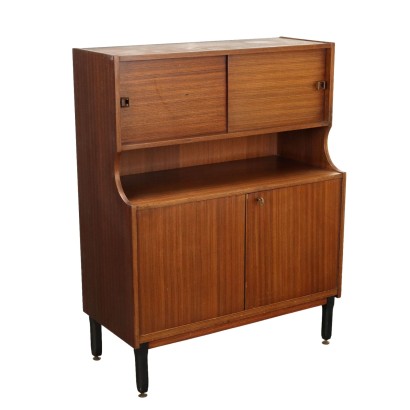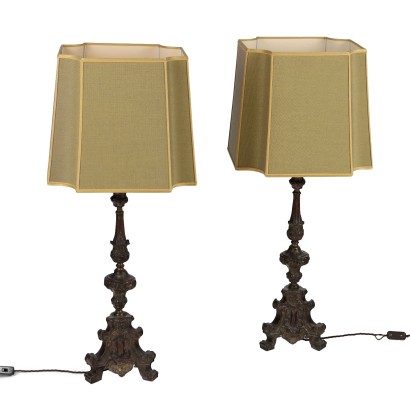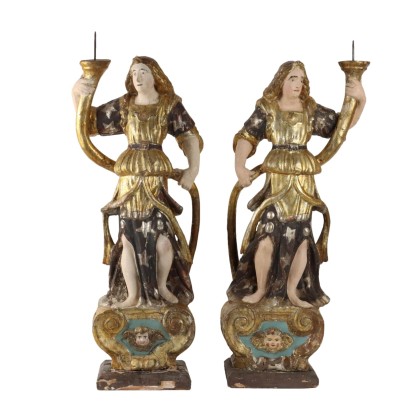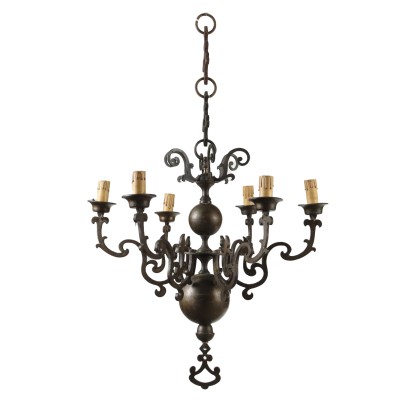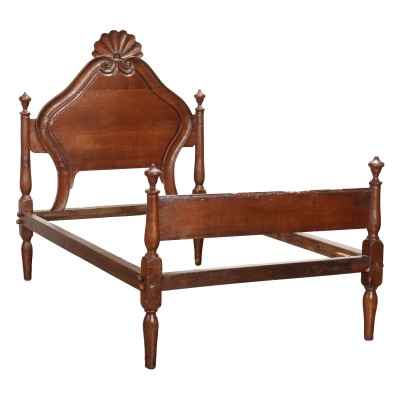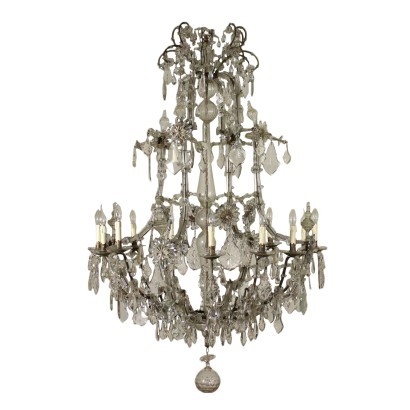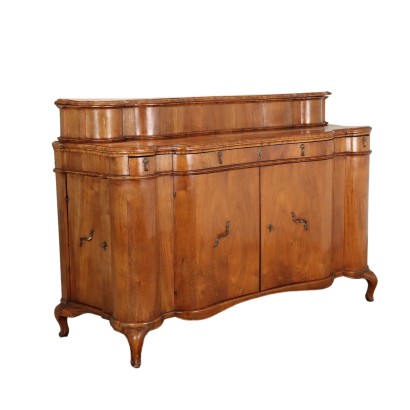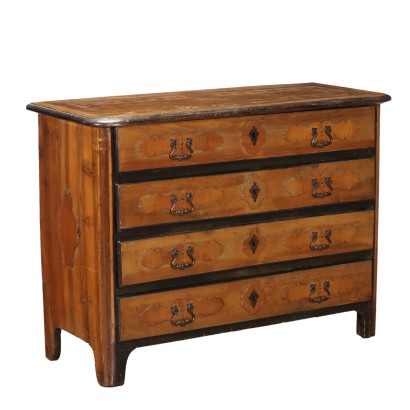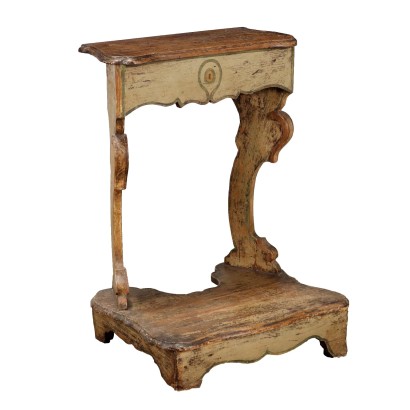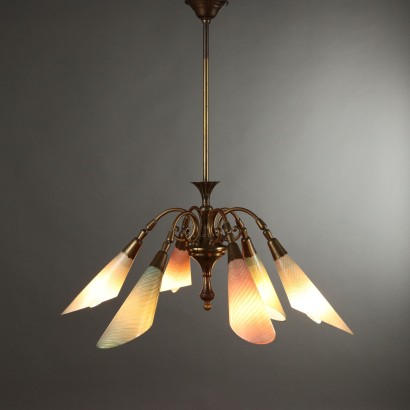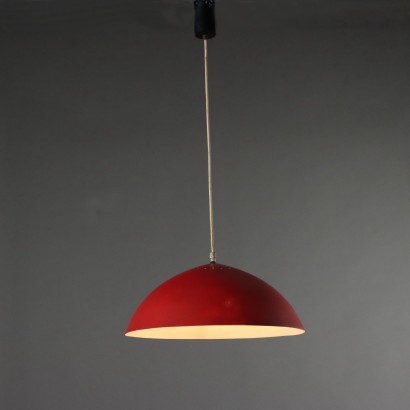Antique Neoclassical Bedside Table Walnut Door Italy XVIII Century - Lombardy, Late XVIII Century
Features
Lombardy, Late XVIII Century
Age: 18th Century / 1701 - 1800
Origin: Lombardia, Italy
Main essence: Walnut
Description
Neoclassical bedside table supported by truncated pyramidal feet, the upper part has a door that continues on the side and in the internal part it is equipped with compartments, the top can also be partially opened. In walnut, the front and sides are inlaid with maple rosette motifs.
Product Condition:
Product which due to age and wear requires restoration and re-polishing. We try to present the real state of the furniture as completely as possible with photos. If some details are not clear from the photos, what is stated in the description applies.
Dimensions (cm):
Height: 78
Width: 51
Depth: 39
Restoration options
Complete restoration
Antirarlo, incollaggio lastroni, funzionamento antina, chiusura e funzionamento del piano, Rifacimento lastroni mancanti e stuccature varie, ripresa della lucidatura, Finitura a gommalacca spagliettato e incerato (Le bruciature si possono camuffare un pochino ma purtroppo si vedranno sempre).Additional Information
Age: 18th Century / 1701 - 1800
18th Century / 1701 - 1800Main essence: Walnut
Walnut wood comes from the plant whose botanical name is juglans regia , probably originally from the East but very common in Europe. Light or dark brown in color, it is a hard wood with a beautiful grain, widely used in antique furniture. It was the main essence in Italy throughout the Renaissance and later had a good diffusion in Europe, especially in England, until the advent of mahogany. It was used for solid wood furniture and sometimes carvings and inlays, its only big limitation is that it suffers a lot from woodworm. In France it was widely used more than anything else in the provinces. In the second half of the eighteenth century its use decreased significantly because mahogany and other exotic woods were preferred.Other customers have searched:
Comodino, mobile da camera, cassettiera..
Approfondimenti
Per approfondire:
Mobile portaoggetti, Inghilterra inizio XIX secolo
Uno stipo toscano a cavallo tra XVI e XVII secolo
Comò Luigi XVI attribuito a Giuseppe Viglione, Torino, fine XVIII secolo
Coppia di comò e comodino della bottega Maggiolini, 1804 ca.
Un mobile comune dalla forme inusuali
Conoscere lo stile impero
Sull'antiquariato in generale dai un'occhiata anche a
Classic Monday: da un pezzo dei nostri magazzini alla storia dell'antiquariato
L'antiquariato dalla A alla Z: il Dizionario dell'Antiquariato
Il dizionario dell'antiquariato - Lastronatura
Il dizionario dell'antiquariato - Mascherone
Il dizionario dell'antiquariato - Natura morta
Il dizionario dell'antiquariato - Opificio
Il dizionario dell'antiquariato - Pastiglia
Il dizionario dell'antiquariato - Savonarola
Il dizionario dell'antiquariato - Rosone
Approfondimenti
Per approfondire:Mobile portaoggetti, Inghilterra inizio XIX secolo
Uno stipo toscano a cavallo tra XVI e XVII secolo
Comò Luigi XVI attribuito a Giuseppe Viglione, Torino, fine XVIII secolo
Coppia di comò e comodino della bottega Maggiolini, 1804 ca.
Un mobile comune dalla forme inusuali
Conoscere lo stile impero
Sull'antiquariato in generale dai un'occhiata anche a
Classic Monday: da un pezzo dei nostri magazzini alla storia dell'antiquariato
L'antiquariato dalla A alla Z: il Dizionario dell'Antiquariato
Il dizionario dell'antiquariato - Lastronatura
Il dizionario dell'antiquariato - Mascherone
Il dizionario dell'antiquariato - Natura morta
Il dizionario dell'antiquariato - Opificio
Il dizionario dell'antiquariato - Pastiglia
Il dizionario dell'antiquariato - Savonarola
Il dizionario dell'antiquariato - Rosone
Product availability
The product can be seen at Cambiago
Immediate availability
Ready for delivery within 2 working days from ordering the product.





